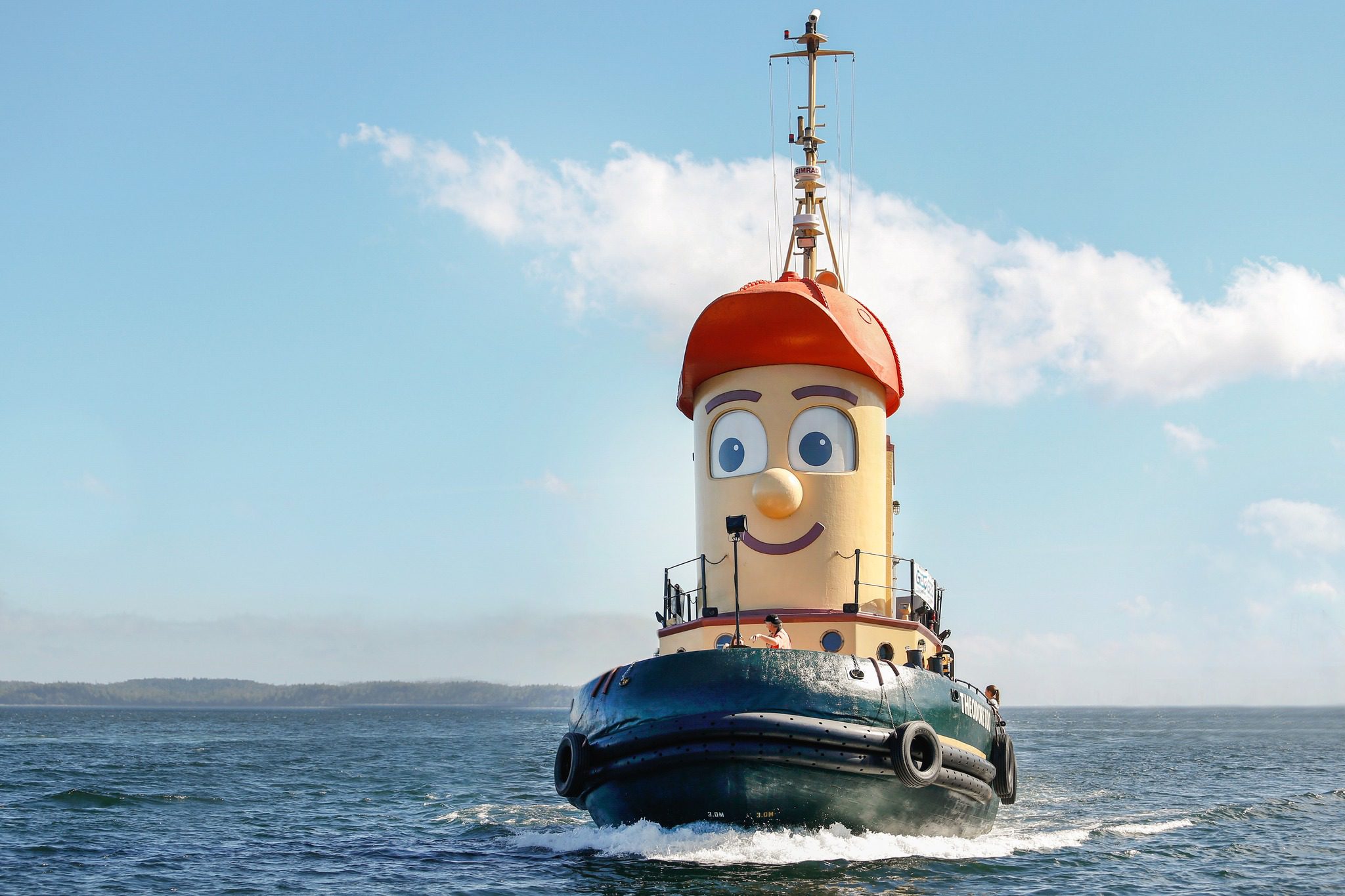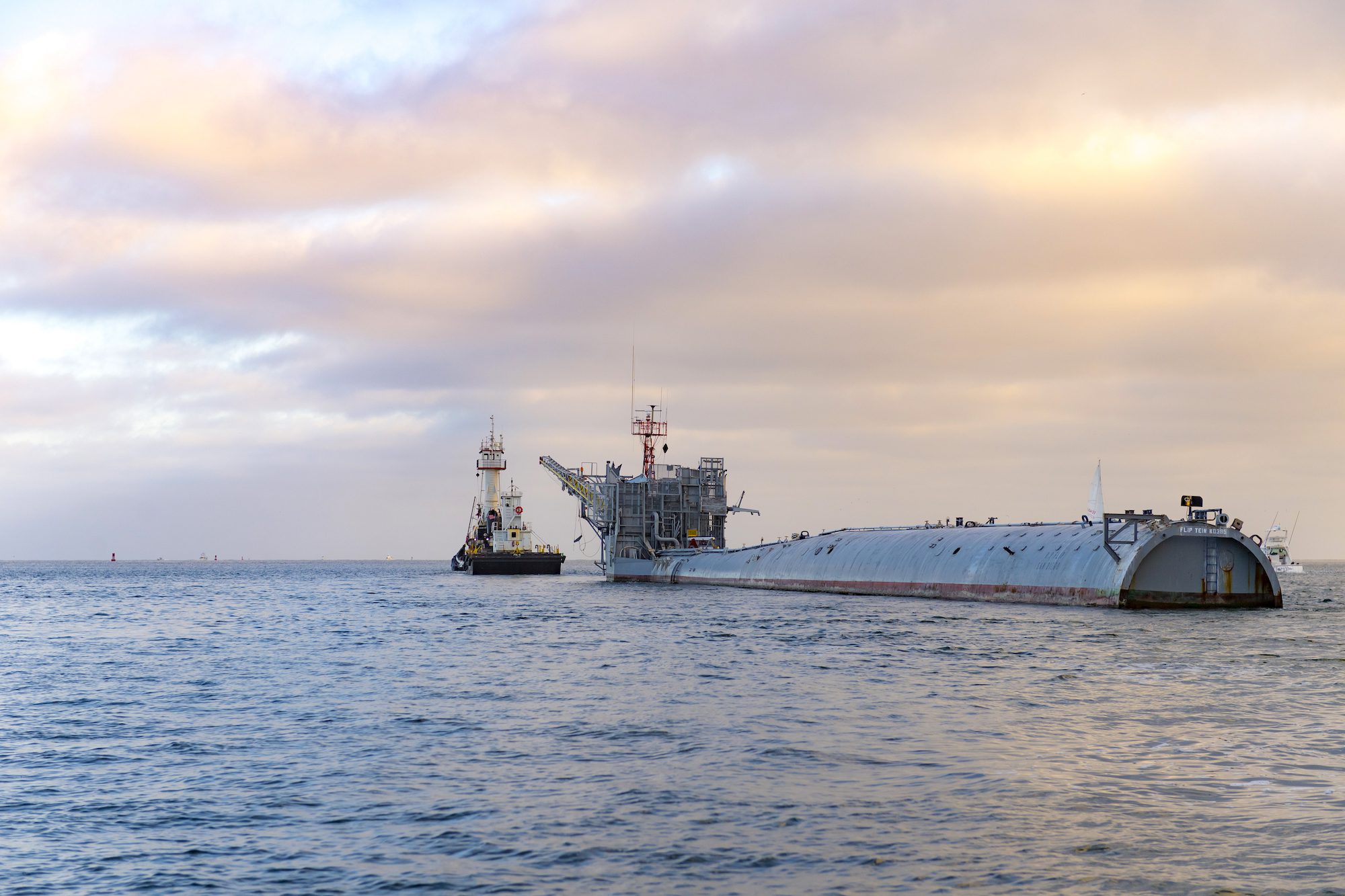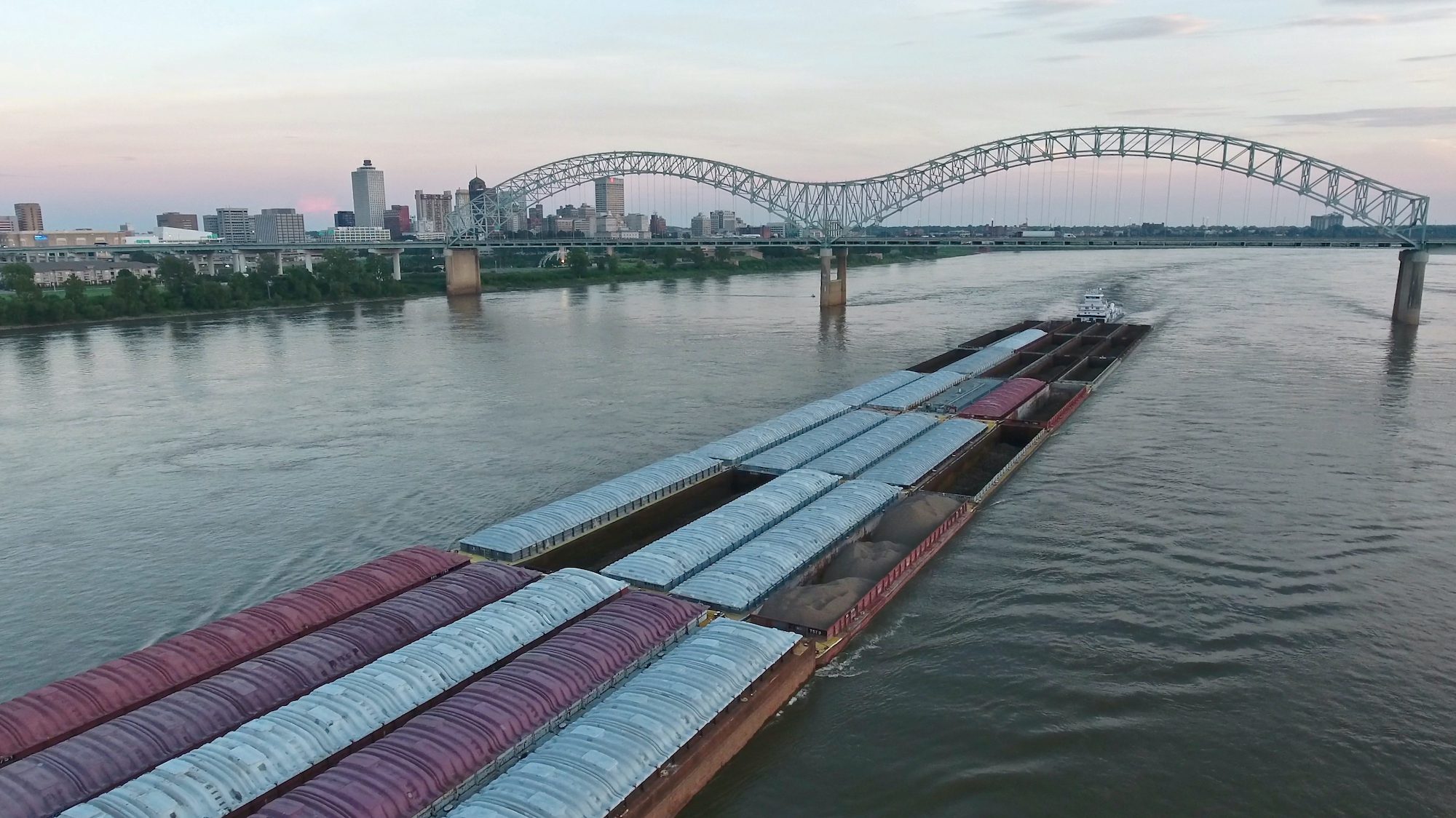By Ralph Gardner Jr.
I needed help understanding my serious tugboat fixation. So I turned to someone who I thought might be able to offer some insight, who might even share my minor passion for these workhorses of the sea—Joseph O’Toole, captain of the tug Ellen McAllister.
I inquired whether he’d loved them as far back as he could remember, the way I did. I realize I was being presumptuous, assuming he liked them at all—so what if he skippered one for a living? For all I knew, familiarity breeds contempt, even toward tugs. But it’s my suspicion that many people harbor affection for these little vessels. As opposed to an ocean liner—certainly the current generation, which look more like floating condos than boats—a tug is something you can wrap your imagination around, that you can imbue with all the virtues you wish were easier to uncover in your fellow citizen; they’re competent, uncomplaining, powerful but self-effacing, always ready at the rescue.
Captain O’Toole didn’t jump at the opportunity to join me in the tug lover’s chorus when I floated the idea that my relationship with tugs—and, I wondered, his?—was most likely formed in childhood, and possibly through children’s books. “I grew up in the mountains of Pennsylvania,” he explained, “the anthracite region. The closest I got” to the water “was the Schuylkill River, and it was only 3 feet deep.”
But wasn’t there some kid’s classic that starred a lovable tug? Or maybe I was conflating several other stories—”The Little Red Lighthouse and the Great Gray Bridge”; “The Little Engine That Could”; “Mike Mulligan and His Steam Shovel.”
“Books never thrilled me,” the skipper stated inauspiciously.
He explained that he’d developed his familiarity with tugboats during a 24-year Navy career. “I ran these tugs,” he said. “This is an old Navy tug converted into a twin Z-drive.”
Apparently, he meant that the boat’s single “screw,” or propeller, had been replaced by two others that had the ability to rotate 360 degrees. (“They’re highly maneuverable,” said Captain Patrick Kinnier, the port captain for the boat’s owner, McAllister Towing, whose vessels have been plying New York Harbor since 1864. “My comparison would be a fixed-wing aircraft versus a helicopter. It can hover, feather, reverse thrust for backing up.”) Indeed, we were witnessing some of those capabilities at that very moment, as the tug helped pull the gigantic Chinese container ship Yang Ming away from its Newark dock and into Newark Bay.
I was dealing with something of a learning curve. When I boarded the Ellen McAllister, at the company’s dock just across the water in Staten Island, I was handed a life vest and told to report to the kitchen to watch a safety video. Apparently, tugs have the potential to be quite dangerous; the video addressed scenarios such as extinguishing onboard fires and becoming acquainted with the “man overboard” alarm (three long blasts of the ship’s signal). And, whatever you do, never, ever straddle a towing line, which can carry hundreds of thousands of pounds of tension. The video included a very painful-looking simulation of what can happen to tug tourists, such as myself, who do.
When I emerged from the video screening we were already alongside the massive container ship—its hull looming a half-dozen stories above us, its tightly stacked containers another half a dozen beyond that. I wasn’t aware that we’d already dropped off Bob Ellis, McAllister Towing’s pilot, at the boat. Now on the Yang Ming’s bridge, it was Mr. Ellis, rather than the ship’s captain, who was issuing instructions over the radio to our tug, at the ship’s stern, and to a sister tug at its bow.
“We’re going to have to help her around the turn,” Captain O’Toole explained, referring to the point of land that led under the Bayonne Bridge. “We’ll push the stern around. Most ships won’t make it on their own. It’s greater than a 90-degree turn.”
At that point, the tug’s work would be mostly done, except to retrieve Mr. Ellis from the Yang Ming. “He’ll go through the Kills and from there he’ll go to sea,” the captain said of the container ship, and referring to the Kill Van Kull, the strait between Staten Island and Bayonne. Midway through the exercise, he turned the wheel over to Josh Kicklighter, the 26-year-old—but even younger-looking—second skipper on board.
“He replaces me at noon,” Captain O’Toole explained. “I work six to 12. He works 12 to six.”
The crew works two weeks straight and then gets two weeks off, returning home. To my surprise, none of them reside in the New York metropolitan area. When here, they stay on board the tug. “I live in Florida,” Captain O’Toole said. “Josh lives in South Carolina. Daniel lives in Florida. Luke lives in Maine.”
Daniel was Daniel Worrie, a deckhand originally from Jamaica who doubles as the tug’s chef and answers to the name Joe. “We named him Jamaican Joe and he liked it so he kept it,” Captain O’Toole explained. Luke was Luke Hutchinson, the ship’s taciturn but talented engineer.
I asked whether Joe was a good cook.
“He tries hard,” the skipper answered.
What does the typical menu look like?
“Jerk chicken and meat loaf,” Captain O’Toole reported. “Jerk meat loaf. Everything is jerk pretty much. If you don’t like spicy you don’t want to eat here.”
The crew doesn’t make it into Manhattan much, to take advantage of the city’s cultural offerings. “Our job is pretty much 24 hours a day,” Captain O’Toole said, as the 148-foot-tall Yang Ming ducked under the 151-foot Bayonne Bridge. (“At low water you get an extra four and a half,” the captain explained. “We were probably four feet [away] when we went under the bridge.”) The tug nudged up alongside it to retrieve Mr. Ellis. “New York doesn’t stop,” the captain said. “We don’t get a chance to hardly do anything. It’s hard to get food for the boat.”
We turned back and headed toward McAllister’s docks as the Yang Ming continued toward Sandy Hook and out into the open ocean. “He’s going to Norfolk, Virginia,” the captain said. “He’ll hit a few ports on the East Coast, go through the Panama Canal. But he’s too wide for that—the maximum is 965 feet by 105 feet wide. That guy is 132 feet wide. He’ll probably go to Europe, through the Suez, and to the Far East that way.”
(c) 2011 Dow Jones & Company, Inc.

 Join The Club
Join The Club











